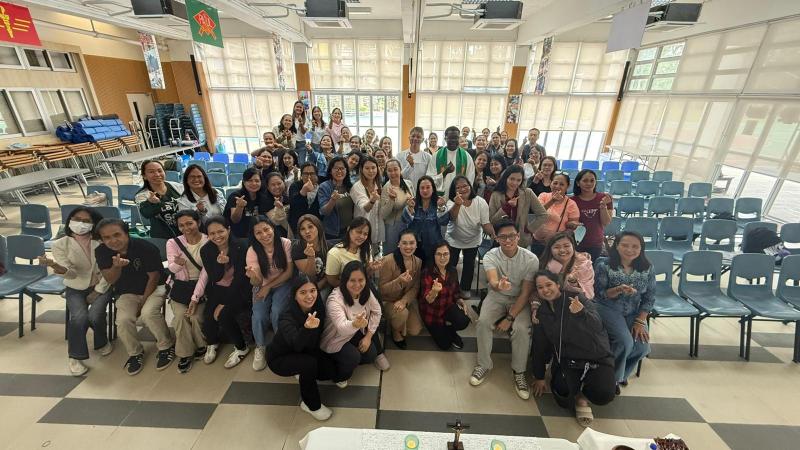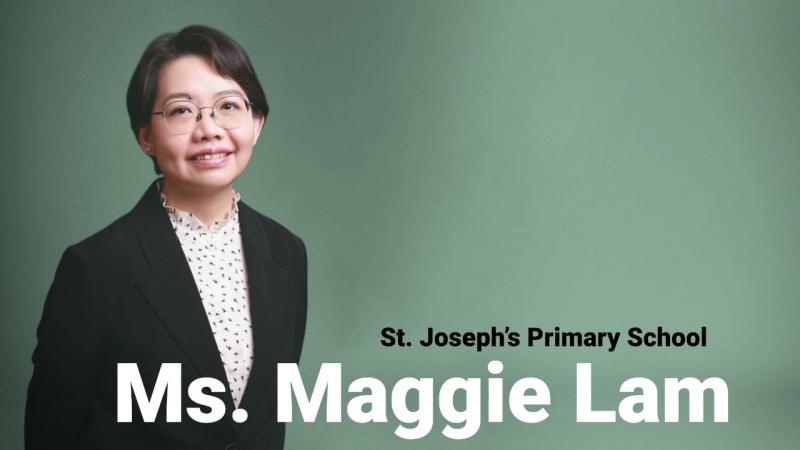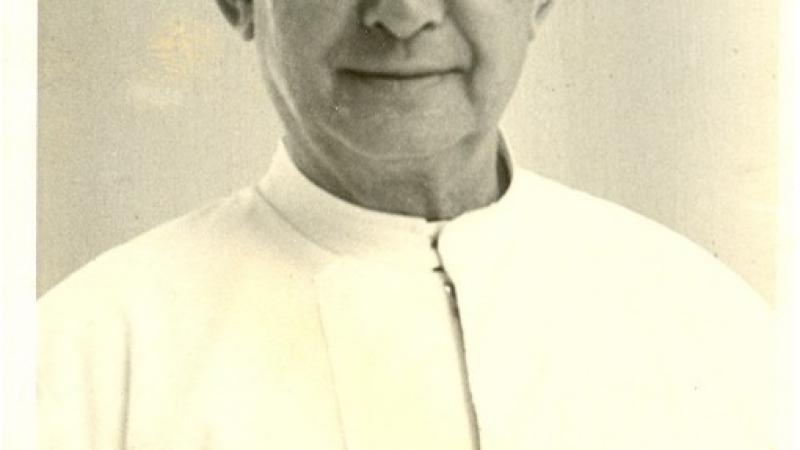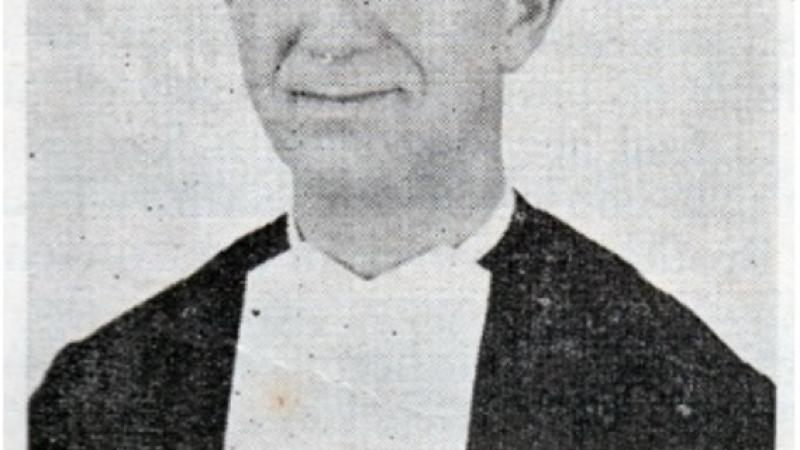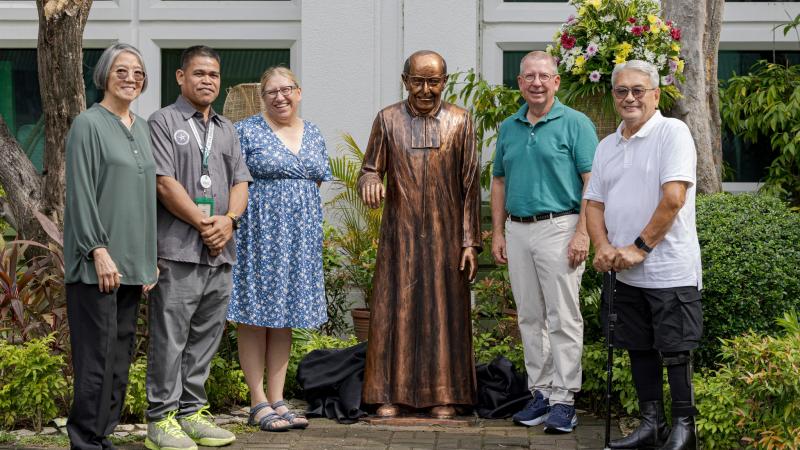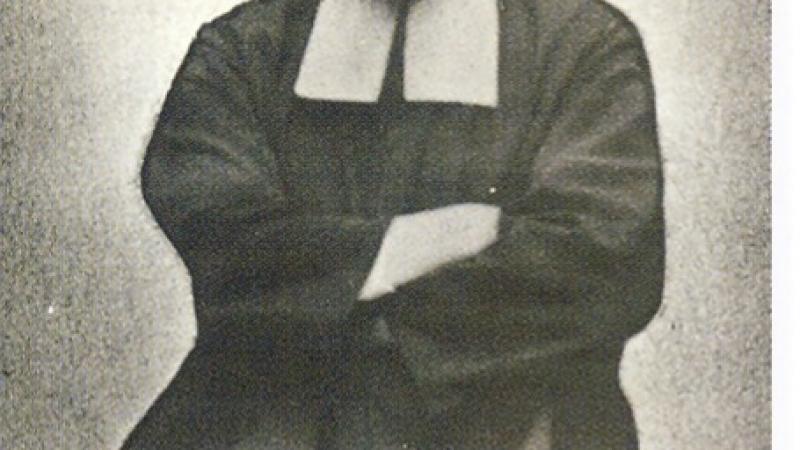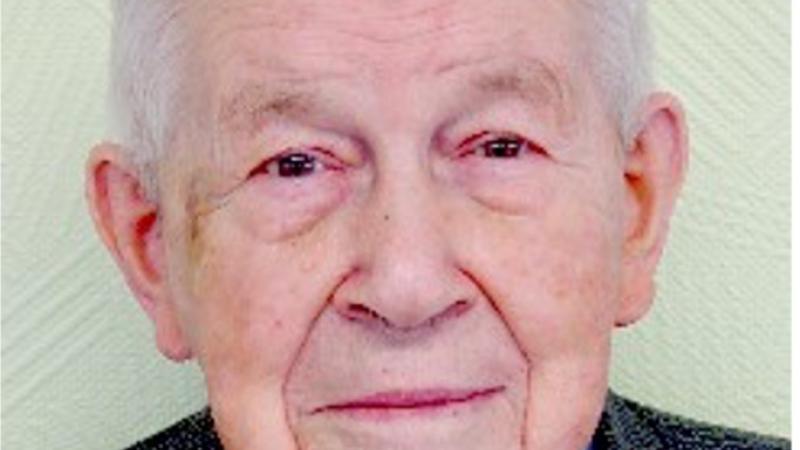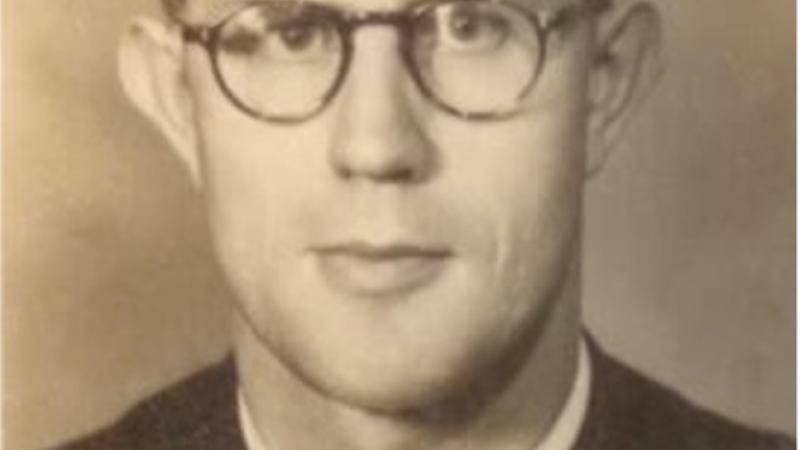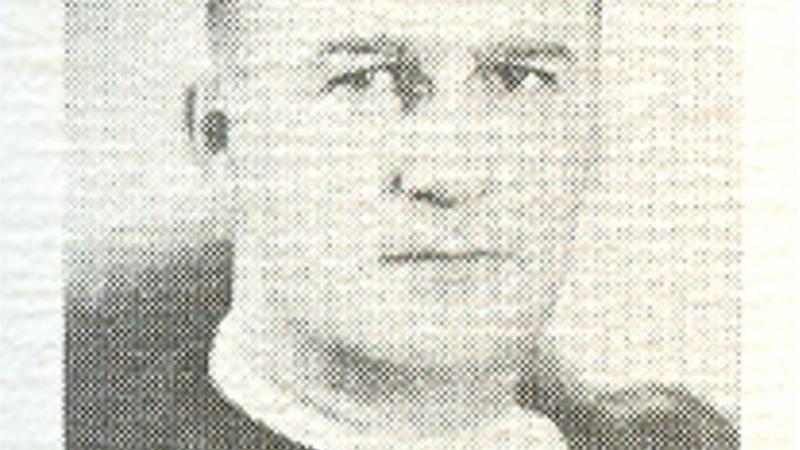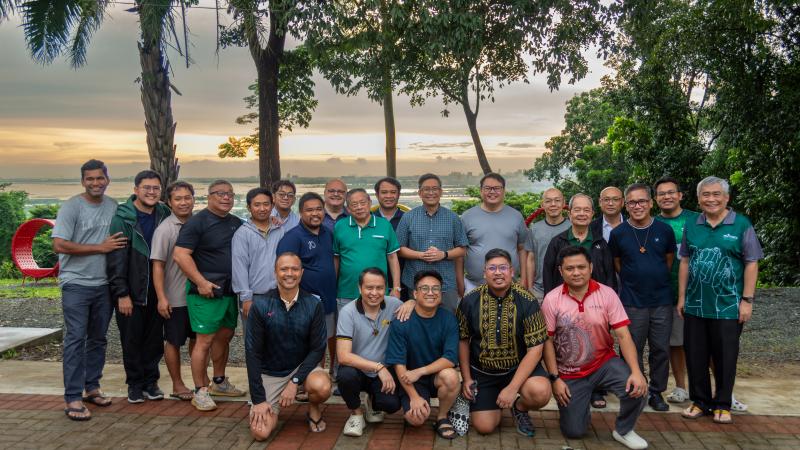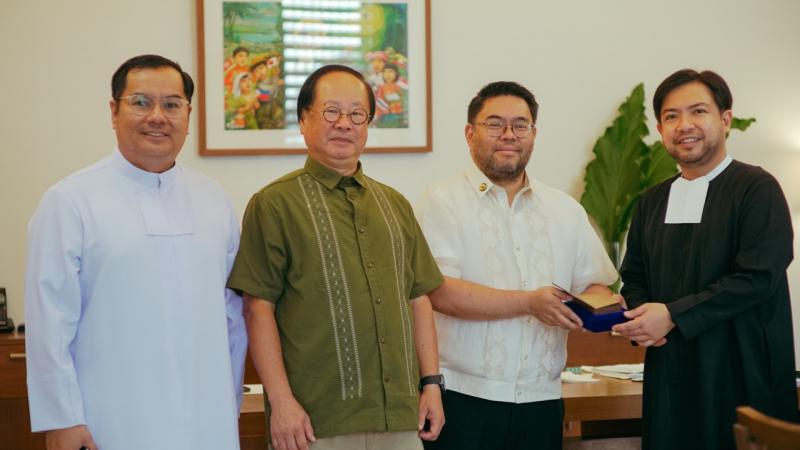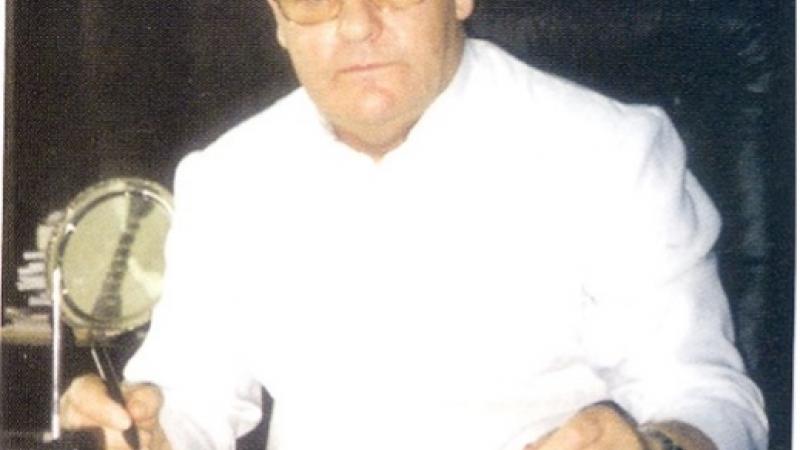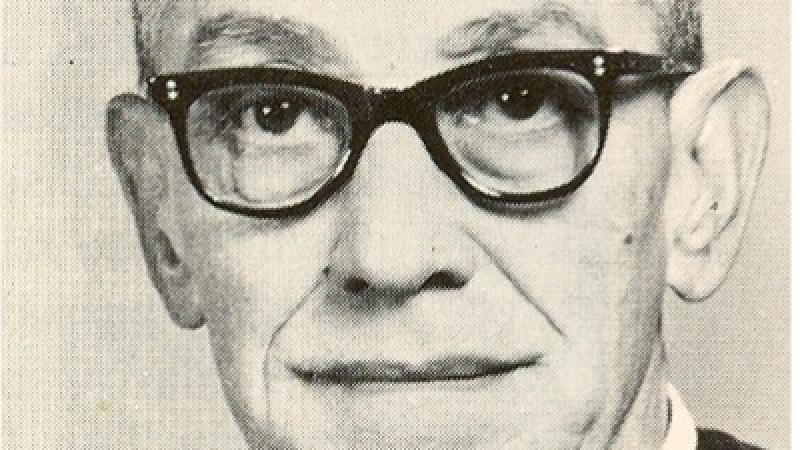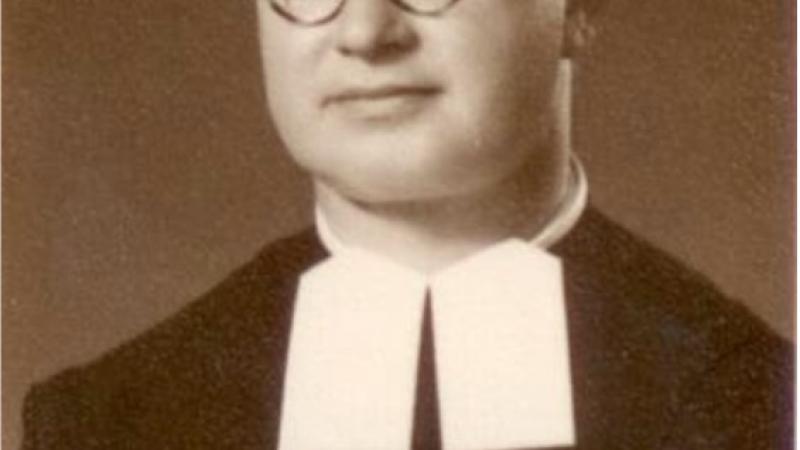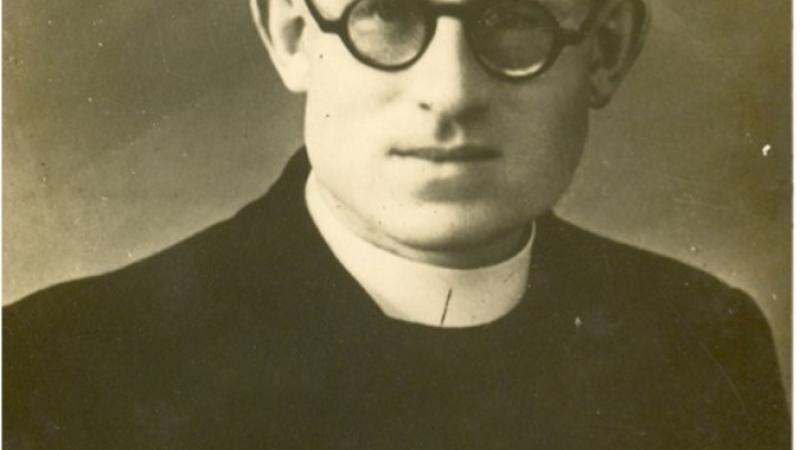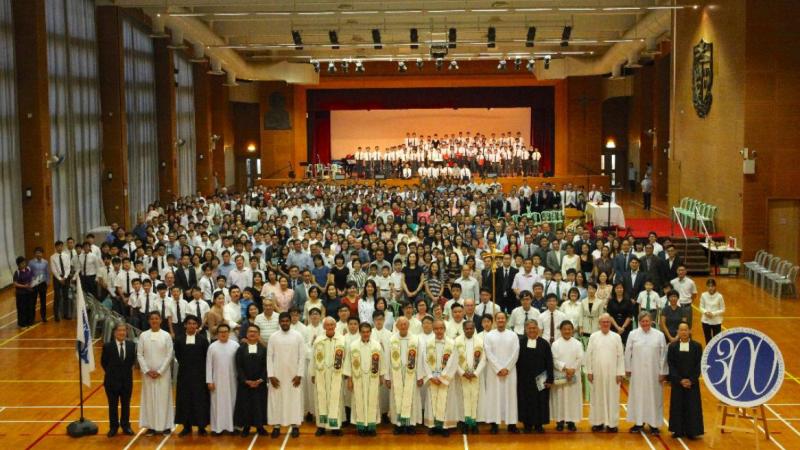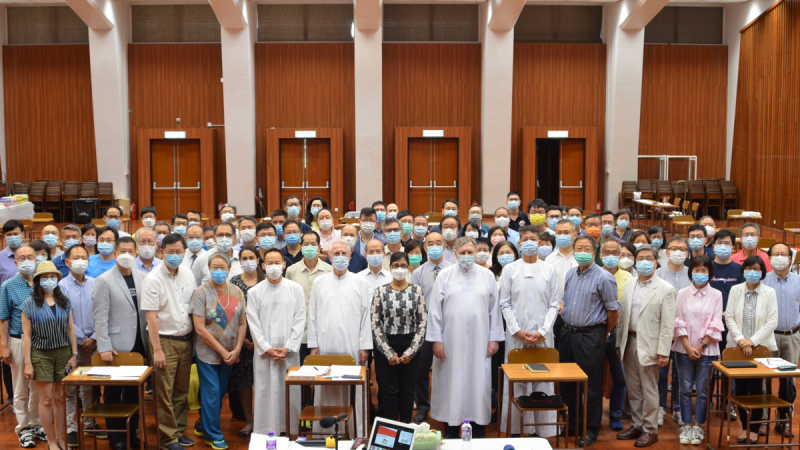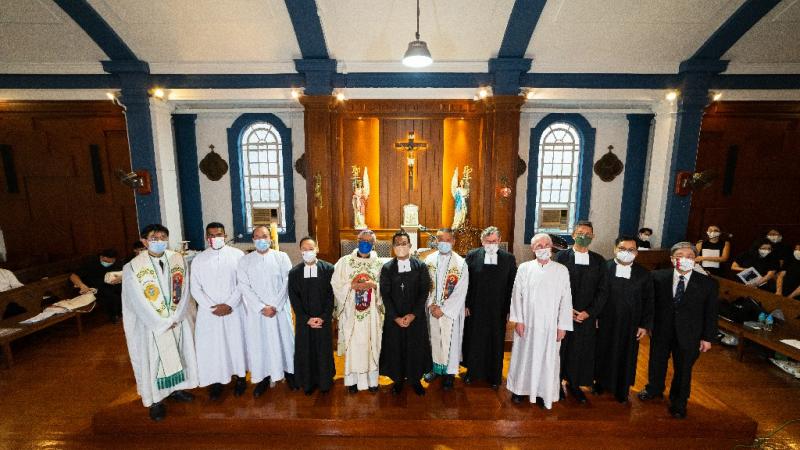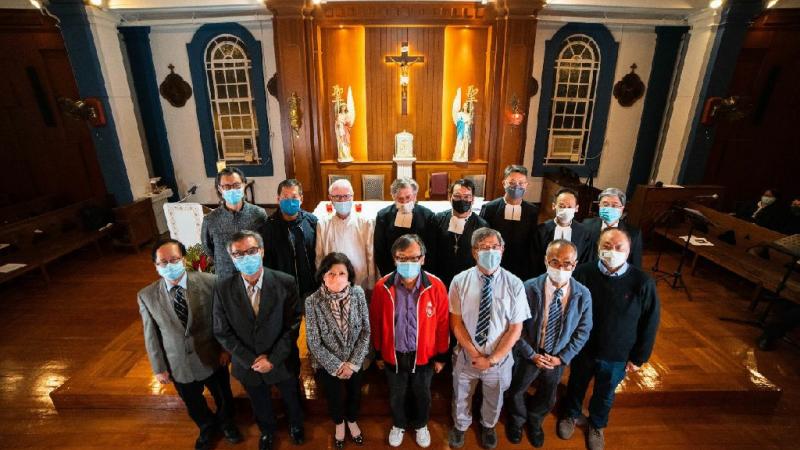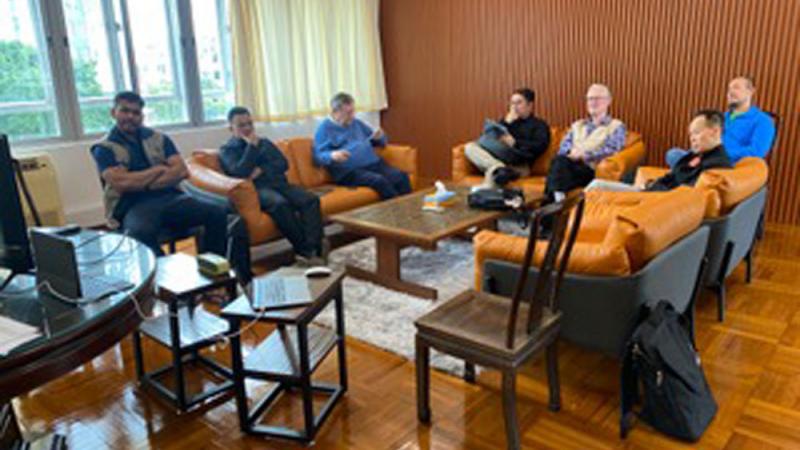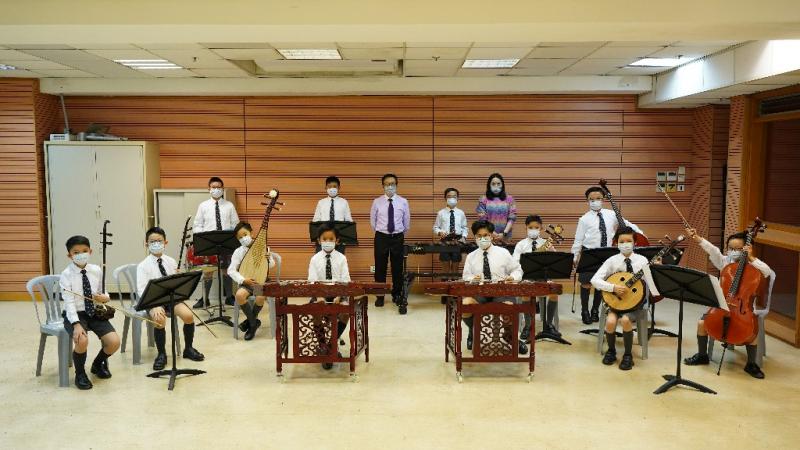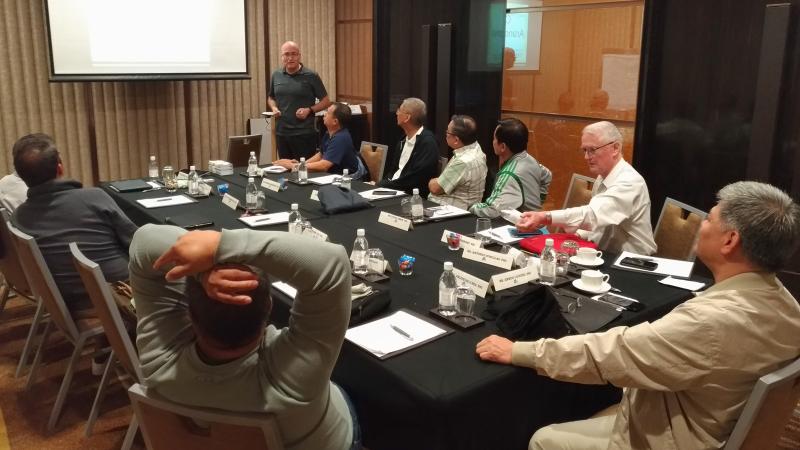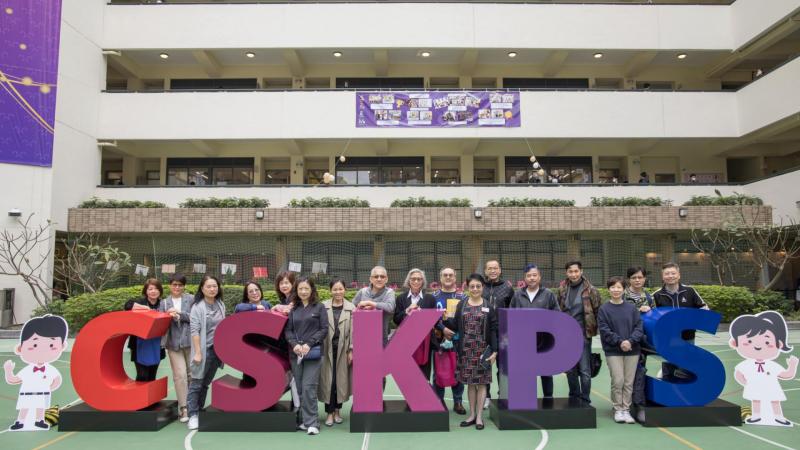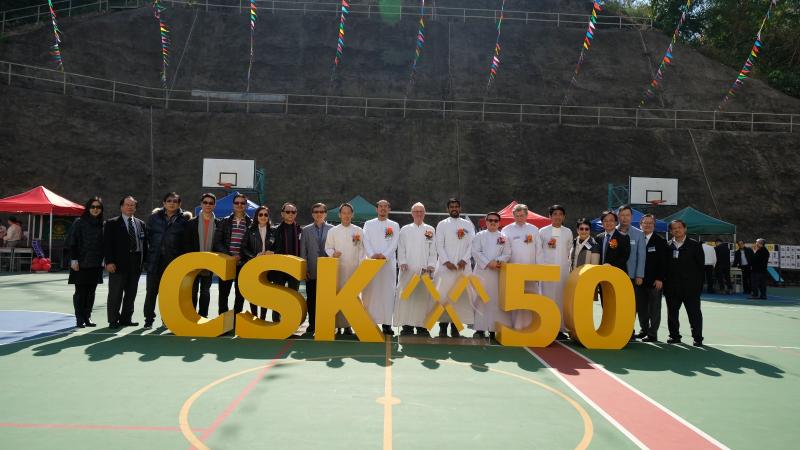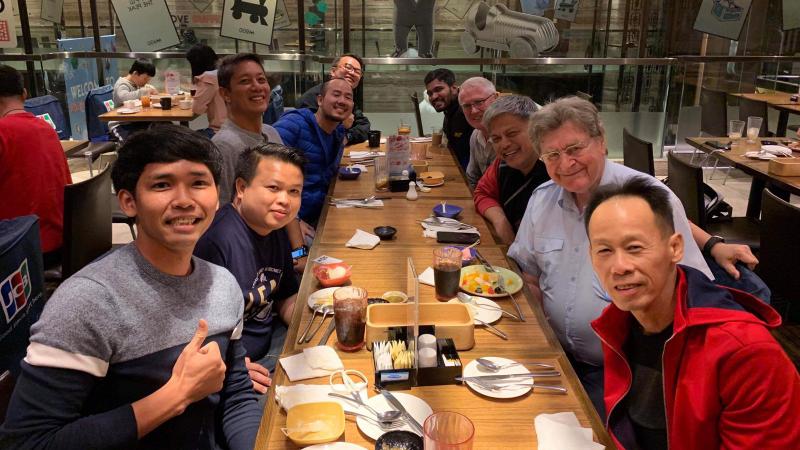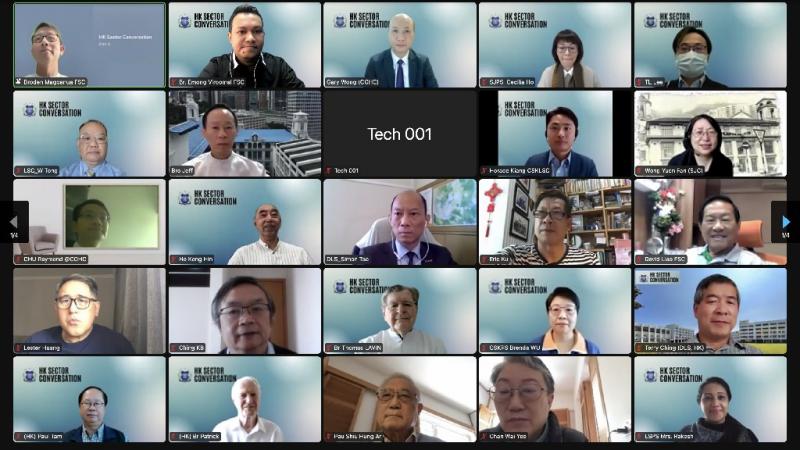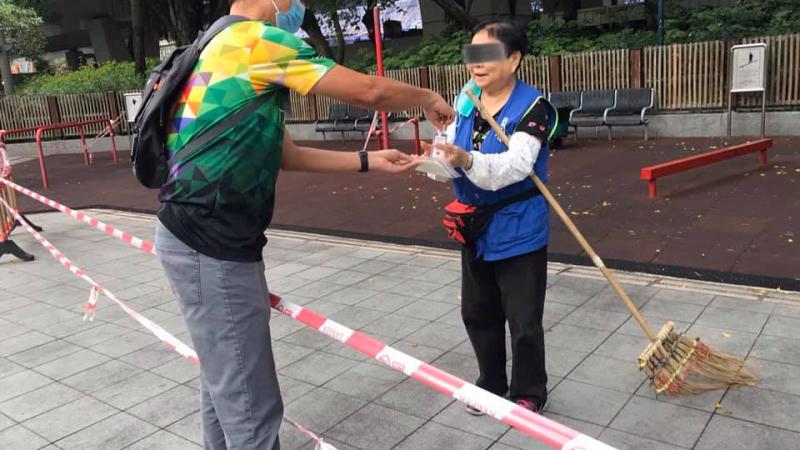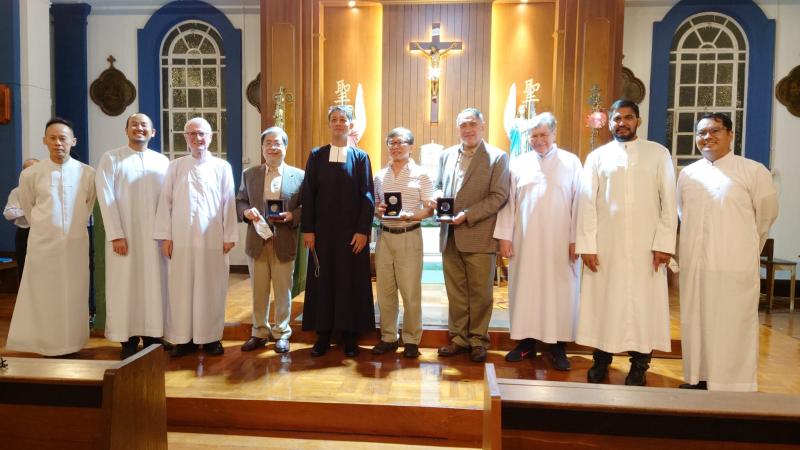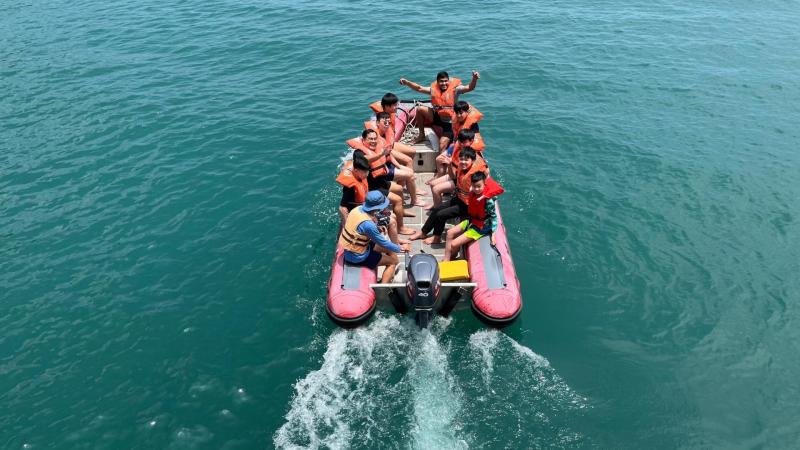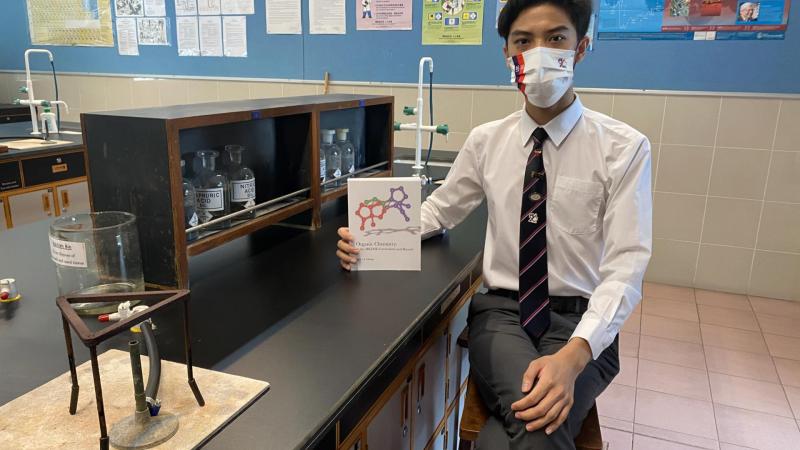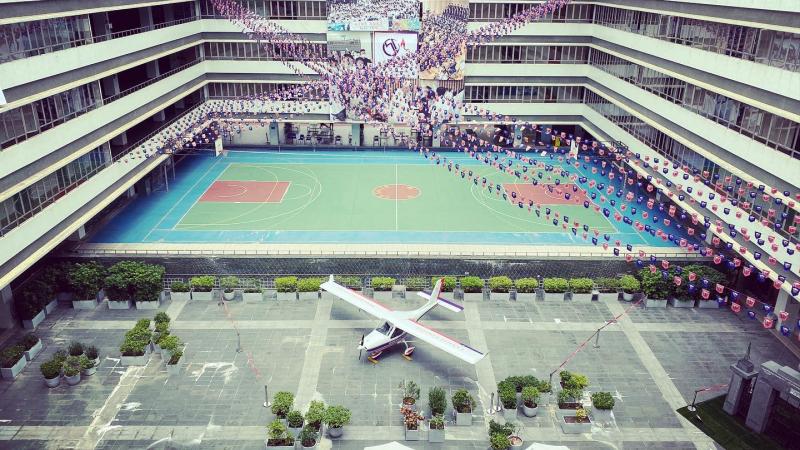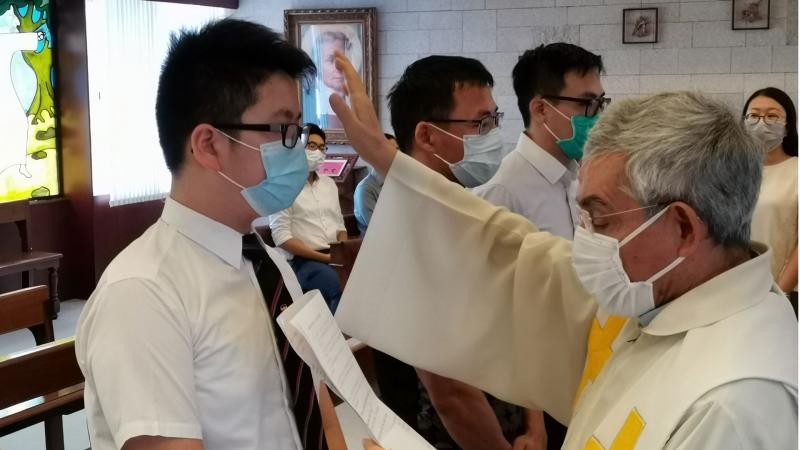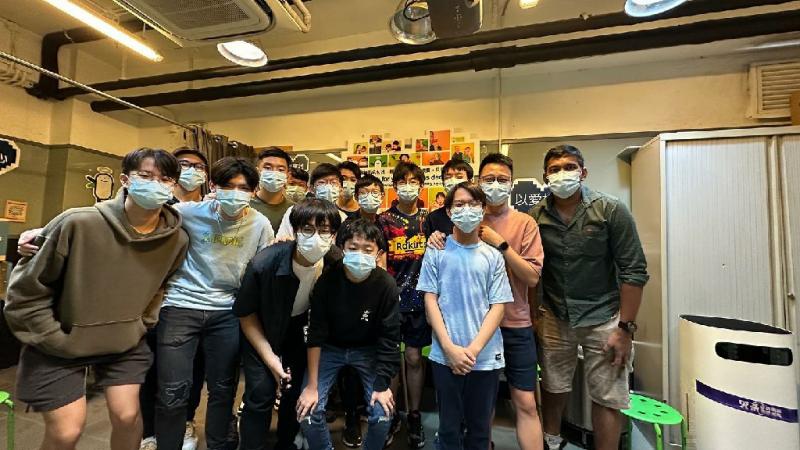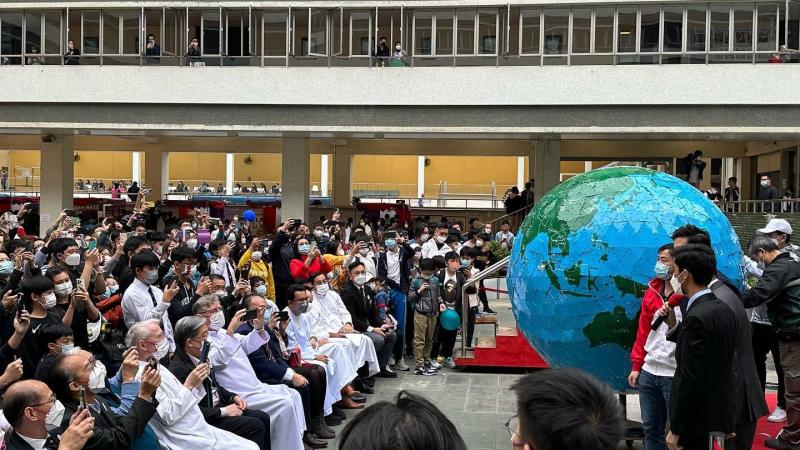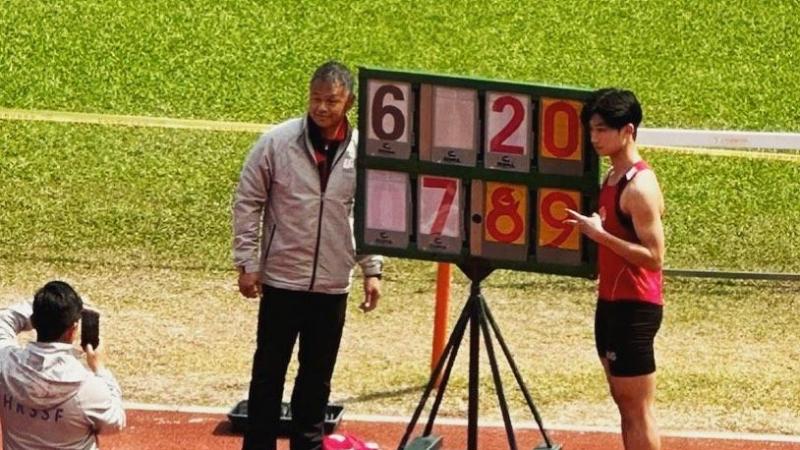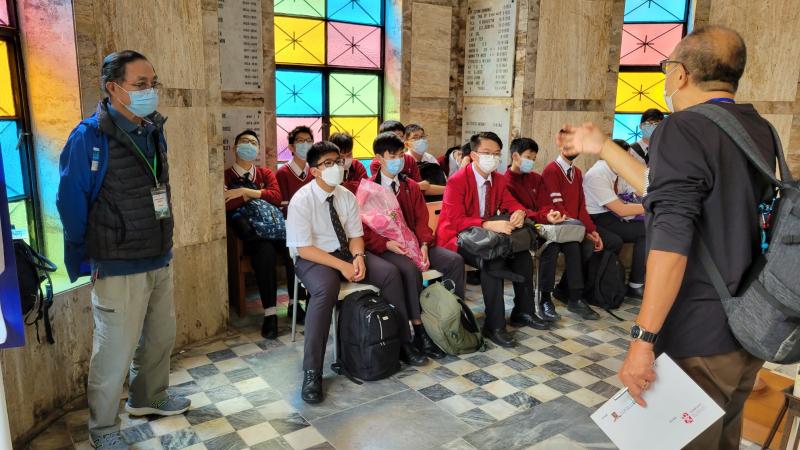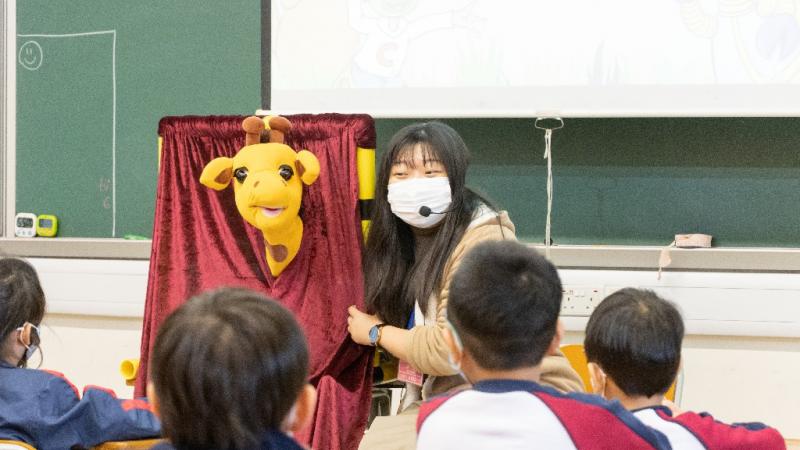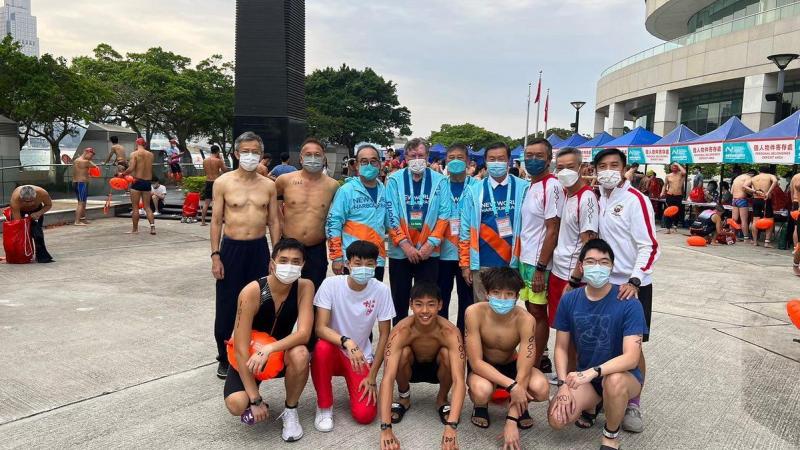
Originally published in The Gateway Issue No. 3 (May 2008)
Among all our dedicated and distinguished Brothers there is one whose outstanding vision and determination helped to set a solid foundation for the future development of the Hong Kong Lasallian family. To him, difficulty was a source of inspiration.
The Brother Assistant Superior General, Michael Jacques, in his speech at the Hong Kong Centenary Celebration Dinner, told the guests:
“ I am sure you would like to join me in expressing our very deep debt of gratitude to all those Brothers who down the years and up to the present time have toiled here in Hong Kong…Each of you will retain individual memories of your beloved tutors, some of whom have made such a tremendous impact. I would like to mention one name, that of the late Brother Aimar, whose contribution to St. Joseph’s and the creation of La Salle College, Kowloon, have been such significant landmarks in the history of the past century. He is representative of a tribe of completely dedicated men to whom we are so indebted and whose spirit should fire us all to emulate their noble example.”
Born in 1873 of the sturdy stock of the Cevennes folk, France, Brother Aimar received his professional training at the Brothers' Central Normal College of Paris. At one time he held a record of 52 years as a Missionary Teacher in the Far East.
His first Eastern assignment was to St. Joseph's Institution in Singapore, in 1892. His teaching skills and versatility were soon recognized so that, early in 1901, a Commercial Class was opened and confided to Brother Aimar. He worked so hard that in less than a year his pupils attained such proficiency in Book-keeping, Shorthand and Typewriting as to merit the highest praise from the inspectors. Un¬der his guidance the boys won many highly prized contests, in particular that of the Queen’s Scholarship. Such high profile awards helped make St. Joseph's Institution one of the foremost educational establishments in Singapore.
On July 5th 1909, however, he was transferred as Acting Director of St. Xavier's Institution in Penang. In 1910, he was instrumental in acquiring a large piece of land across the road from the school which was developed into a beautiful sports-field. As he was to repeat later, he did this despite the fact that funds were very tight, obviously realizing the value of space for a school. In any case he contributed greatly to the general redevelopment of the school.
After a term in Moulmein, Burma, he was sent to Hong Kong and it was in Hong Kong that Brother Aimar’s many talents were unleashed.
In 1914, he was made Director of St Joseph’s College after the sudden death of Brother Peter Close, who survived his appointment as Director only one month and who died on the 30th April. Brother Aimar arrived in Hong Kong on the 21st May and assumed management of the College, then at Robinson Road. The location held a commanding view of the famous Hong Kong harbour. Under his leadership the College grew in size and fame. Eight new airy and bright classrooms were soon added and a new building was later put up. A student at the time, who later became a prominent benefactor of the school, remembered Brother Aimar as “a bearded, amiable and efficient headmaster.” The Brother Visitor at the time, Brother James Byrne, in a letter to the Bishop in 1916, shows his confidence in Brother Aimar’s abilities: “I desire to give your Lordship my best assurances that Brother Aimar will continue to guide the destinies of the College with untiring zeal, prudence and devotedness and that he will work in perfect harmony with the Mission.”
By 1917 he had built twelve additional classrooms, secured from the Government for the College the use of a playground at Happy Valley, purchased a country house for the Brothers and acquired a large building on Chatham Road for a branch Junior School. Brother Aimar worked quietly but efficiently.
Disaster struck in 1918 when the tremors from an earthquake whose epicenter was in Shantou, China, damaged the College building. After a government inspection, some of the school structures were declared unsafe. It was also considered unsafe to remain in occupation of the building. This was quite a big blow to the Brothers since the school building on Robinson Road was a good one and indeed a landmark in the territory. But disaster for Brother Aimar seemed always to be a source of inspiration. He began to search for pastures new. It seems he saw opportunity in the crisis. He was well aware of the pressure of the ever-increasing demand for admission and the necessity of returning the Robinson Road campus to the Catholic Mission, and therefore set about finding a new building, which could meet all up-to-date requirements, though his financial resources were very limited.
Thanks to the help he obtained from Father L. Robert, Procurator of the Paris Foreign Mission as well as to his own unflinching courage and determination in the face of all financial difficulties, the acquisition of Club Germania on Kennedy Road was made possible in 1918. At the time, the Club was mortgaged to the Hong Kong Shanghai Bank. Most of the day and the boarding students as well as the Brothers moved there quickly.
Brother Aimar knew that the German Club would not in itself provide sufficient accommodation for a school of 600 pupils and he immediately set himself the task of expansion. There was little or no money but he asserted that the money could and must be found and found it was. With the help of the Lasallian schools in Singapore and Penang and a Government building grant, the North Block (1921) and the West Block (1925) were erected. If the North Block was intended for classrooms, the West Block was for facilities. The first floor of the West Block took up the school hall, the second floor housed the physics and chemistry laboratories and the top floor was reserved for the school chapel capable of accommodating all the Catholic students. These two blocks still exist and, in the year 2000, were declared historical monuments.
At the official opening of the West Block on 23rd October 1925 by the Governor, Sir R.E.Stubbs, Brother Aimar gave a speech which was recorded by the daily South China Mail newspaper. The speech gives an interesting insight, not only into how money was raised for the construction but also into Brother Aimar’s frame of mind at the time. Here is an excerpt:
“Rightly conceived, education is a means of brightening life, of making the world a better place to live in. To accomplish this task, the body and mind of the child must be trained. We all know that it is an admirable thing to have a sound body; it is an even better thing to have a sound mind; but infinitely better than either is to have character. Character is the decisive factor in the life of individuals.” Governor Stubbs also noted that the formation of character was a feature of the administration of Brother Aimar and his staff.
The year 1925 is also remembered as the year of the general strike and the colony faced a very severe economic crisis. Gradually, all schools, apart from St Joseph’s, closed. At the end of June Brother Aimar received an urgent appeal from the Government for student volunteers to keep the postal service running. Brother Aimar asked Brother Cassian to take charge and the boys did trojan work until the strike was over.
Besides overseeing the physical developments of the College, Brother Aimar found time to actively support student activities such as the building up of the scout troop formed in 1913, the formation of a St John Ambulance Brigade in 1927 and supporting the various sports teams.
Brother Aimar must have been a very busy man around this time because besides dealing with St Joseph’s he was also engaged in the search for a junior branch school in Kowloon. The immediate intention was to spare the younger boys the trouble of crossing the harbour daily. Eventually, he was able to purchase a building on Chatham Road and opened the branch school there on 5th September 1917. This step was received with great favour, especially by those of Portuguese descent who had moved to Kowloon.
After securing a solid foundation for St. Joseph’s College, Brother Aimar now turned his attention to a much more daring project, his “opus magnum.”
As early as 1924, and anticipating the growth of Kowloon, he began to look for a suitable site for a new secondary school there. From the experience of struggling to find enough space and classrooms to accommodate students at St. Joseph’s College, he was determined to acquire a larger piece of land for the new school. He was also aware that the Chatham Road school building was not suitable for extended development. And so, as early as April 1924, we find him writing to Governor Sir Cecil Clementi: “The removal of the school in Chatham Road to new quarters should be expedited for the sake of both boys and staff. The premises are not suitable and the playground accommodation is not good”.
He roamed the hills of Kowloon in search of a suitable site and negotiated with the Government officials for years. He put his eye on a hilly site north of Boundary Street, in leased- land- from- China territory, and in 1926 even got the Governor to accompany him to have a look at his proposed 10 acre school site. If the Governor thought that Brother Aimar was asking for too much, he kept his counsel. There were some who considered the choice of location ill advised, even foolish, but Brother Aimar would have none of it. On the 23rd April 1928, he finally obtained 10 acres of land at public auction for HK$120,000 (about 28 cents per square foot) and began designing and building a new school which he named after St John Baptist de La Salle. He also managed to purchase 3 more acres of land nearby which would in time house La Salle Primary School.
Brother Aimar did not waste time. Contracts were drawn up, the contract awarded and the architects appointed. Site formation began and the foundation stone was laid on 5th November 1930. Brother Cassian Brigant witnessed all these developments and notes: “Work went forward without pause for more than a year under the constant supervision of Brother Director, Brother Aimar. Whenever he had a moment free, he was there to inspect the work, and in this way prevented several mistakes.” Brother Aimar thought big and big is what he got. The dogged and intrepid Frenchman had persevered to the end and produced a veritable monument. He was the first Principal of La Salle College when it opened its doors in December 1931, though the official opening was not until1932. At the opening ceremony he had praise for the students:
“Nothing has been spared to make their school life as pleasant as possible. The boys appreciate what has been done for them and give us entire satisfaction.”
Brother Aimar remained Principal until the Japanese soldiers forced the Brothers to leave the College in 1942.To this day many old boys swap fond memories of their days under the “Dome”, the crowning glory of Brother Aimar’s school.
It is not too surprising that, after all this hectic work over a number of years, Brother Aimar began to show signs of ill health and for that reason was told by his superiors to take a rest in his home country. And so he set sail for France in April1933 and returned in December, relaxed and refreshed. He did not return alone. He brought with him a special gift, a new recruit in the person of Brother Casimir Husarik who was to remain attached to the College for the rest of his life.
Brother Aimar was now able to enjoy some of the fruits of his labour as he guided the new College through some of its bumper years both academically and in sports. At the 1938 Prize-Giving Day one of the prize recipients recalls: “Our Grand Old Man (Brother Aimar), receiving the guests, gave a dignified touch to everything”. Indeed, although he was quick of mind and in initiating action, he himself never seemed to be in a rush and approached everything with dignified calm.
He was soon to need all the calm he could muster because news of the outbreak of war in Europe had an immediate impact. The British authorities had been eyeing La Salle College for some time as a possible resource building. On the 3rd January 1939 the army encircled it with barbed wire, observation posts, barriers and grills and four watchtowers and it became an internment camp, initially for German nationals, termed “enemy aliens”. This development was a bitter pill for Brother Aimar to swallow, a cruel and unexpected blow. It looked like the beginning of the end but he decided to make maximum use of the adjacent plot of land and house he had purchased in 1928 and set up temporary classrooms. There, school resumed in a bi-sessional format. By 1940 the College was back in the possession of the Brothers and normal school operations commenced in September. It was to be the last ‘normal’ school year before Japanese occupation.
The Japanese attacked on the 8th December 1941 and Brother Aimar announced to the whole school already assembled for the Christmas examinations that these would be postponed indefinitely and that the boys were to return home immediately. Who would have thought that this would be Brother Aimar’s last school announcement! By the 13th December the Japanese had overrun practically the whole of Kowloon. For a while the College catered to both British and Japanese wounded but gradually the Japanese noose tightened and they took complete control of the College. On January 17th the Brothers were told they would have to leave and they sought and found refuge in an apartment through the good offices of the parish priest.
They left practically everything behind. The Japanese had promised Brother Aimar to seal off the chapel, the sacristy and the main office. However, there was little doubt in the minds of the Brothers that all the registers and files would be destroyed. Brother Aimar, whose face was by now lined with sadness and worry, realized there was little the Brothers could do in the circumstances and decided to head for Indo-China (Vietnam). On the 1st March 1942 he led a group of 10 Brothers and set out for Haiphong. For some it would be a journey of no return. It would be an understatement to say that Brother Aimar left Hong Kong with a heavy heart.
He spent his last days in Vietnam. The Brothers there treated him lovingly and, according to Brothers Michael Curtin and Felix Sheehan, “went out of their way to make his last days happy. He had every medical attention and medical care”. Exactly 15 years after the laying of the Foundation Stone of La Salle College, on 5th November 1945, he passed away at Nhatrang, Vietnam, at the age of 72. He was buried in the small cemetery on the site of the Brothers' Formation House at Nhatrang.
Back in Hong Kong a solemn service was held at St Teresa’s Church on the 5th November 1946 with a sung Mass celebrated by an old friend, Fr Spada.
La Salle College celebrated its silver jubilee in 1957 and did not forget its founder. The Silver Jubilee commemorative publication pays this tribute: “Out of the welter of words and rejoicings in this Jubilee Year, the figure of Brother Aimar is an abiding memory. Only those whose good fortune was to serve under him in the early days of the College can understand the magnitude of the pioneer work he achieved. Prayer, energetic labour and boundless patience were his armoury.”
The Brothers and old boys of La Salle wanted to mark Bro Aimar’s immense contribution to the school with a substantial sculpture. On the 13th June 1962 they took the opportunity of the visit of the Superior General, Brother Nicet Joseph, who unveiled a bronze bust of Brother Aimar placed in one of the courtyards of the school. This bust was paid for and presented to the school by the La Salle Old Boys’ Association.
The story was not complete. There seemed to be a general wish to have Brother Aimar’s remains brought back to Hong Kong. The services of Brother Michael Jacques, Assistant Superior General, were enlisted. The Brothers of Vietnam and their old boys did all in their power to break through official red tape. In December 1966, Brother Aimar’s remains were exhumed and personally carried to Hong Kong by Brother Michael. After Mass and funeral rites, the remains were placed in a silver casket and inserted in a granite niche under the bust. The inscription read: Si Monumentum Requiris Circumspice! If you seek his monument, look around you.
At the Re-internment of the mortal remains of Brother Aimar, Brother Michael said in part: “Today, Brother Aimar comes home to us, to this creation of his dreams, to this fine monument to the memory of a truly great man. If a man’s achievements are the measure of his soul, then St Joseph’s on the island and, above all, La Salle here in Kowloon, must mark him out not only as a great servant of God but an outstanding educator as well and one of the great citizens of his time.
What distinguished him in a special way was the extraordinary affection and loyalty he was able to generate among his pupils and among all who came to know him.”
But there was a final twist to the tale. In 1978, with the demolition of the old school building, Brother Aimar’s remains were moved to the Brothers’ vault in St Michael’s Catholic Cemetery, Happy Valley. And there they rest to this day.
Brother Aimar, as founder, had given gave to La Salle a tone and a tradition. His role in the Lasallian Mission in Hong Kong was summarized by Mr. J.P. Braga, a prominent old boy of St. Joseph’s College, as follows:
‘Retiring and unassuming, Brother Aimar never impresses one with the outward appearance of a financial genius. Nevertheless, he may be likened, metaphorically, to a unit of “silent service”.’
Brother Patrick Tierney composed the following poem in memory of Brother Aimar:
A Man of Vision
Not for him the shining brilliance
of stoked fire spewing out
red -hot sparks of burning ash.
Not for him the garish show
of vulgar ostentation flaunting
its loud strutting display.
Not for him the cut or dash
the dazzle and razzmatazz
of glamour showbiz.
I contemplate his portrait;
the enigmatic, still aura
of dignified love,
the eyes calmly inviting,
kindling the flame of learning,
lighting up the soul.
Here was a man
who saw the divine
in the heart of a child.





